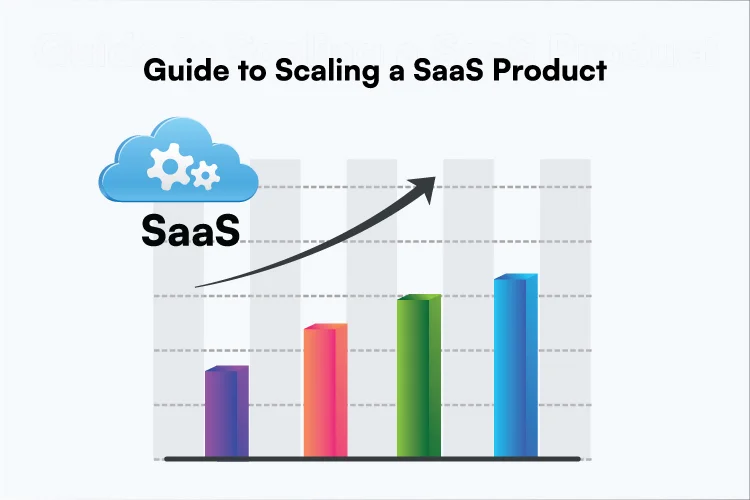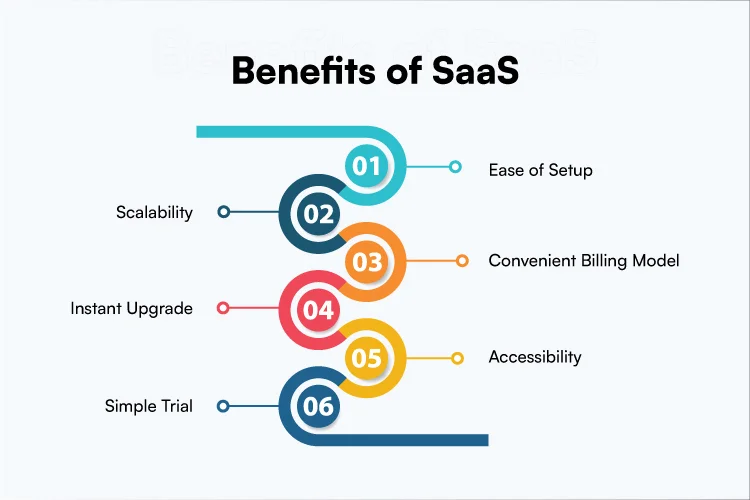People risk management is a critical component of every organization since it ensures the safety and well-being of your people while they are at work. Many companies provide services in this area, assisting and advising enterprises wishing to develop successful risk management techniques.
One issue that these businesses frequently encounter is the requirement for a scalable and efficient method of managing their clients’ people safety. SaaS’s nature lends itself to scalability.
As user demand grows, scalability is vital for SaaS software development services to stay efficient, effective, and trustworthy. Scalability promotes a smooth and seamless user experience by allowing an application to accommodate an increasing number of users, data, and transactions without affecting performance. As a result, user satisfaction, customer retention, and revenue growth rise.
Vertical and horizontal scalability are the two types of scalabilities. Vertical scalability refers to the capacity of a single server or resource being increased by adding more memory, computing power, or storage capacity. Horizontal scalability, on the other hand, refers to adding extra servers or resources to the program to manage rising demand and consumption.
Furthermore, scalability enables firms to respond swiftly to market developments, adapt to changing user needs, and increase their competitiveness. Businesses may future proof their applications, reduce downtime, and increase their return on investment by attaining scalability in SaaS software.
This blog, we’ll go through various advantages of scalability in software development and how it may help businesses succeed in the long run.
Before we go into the reasoning and importance of Scalability for SaaS, let’s first define SaaS.
Understanding SaaS:
SaaS, or Software as a Service, is a software delivery paradigm in which programs are hosted and provided to customers via the internet. Businesses can access and use SaaS items using web browsers rather than installing and upgrading software on individual devices, alleviating the burden of infrastructure upkeep. SaaS products are built to be scalable, adjustable, and accessible, and they offer various advantages to businesses.
Guide to Scaling a SaaS Product:

There is no simple method to create an app or build SaaS products that can rapidly scale from a few thousand to millions of users. It’s considerably more difficult to compete in multiple marketplaces at the same time. So, here are a few measures that may assist you in developing a future-proof solution.
1. Evaluate your company: Analyze your firm from various angles to guarantee that it can scale in tandem with demand. Here’s a condensed version of a checklist of items to consider:
- Technical specifications of your software and hardware (cloud platforms, data centers, servers, backend apps, open-source tools).
- Architecture sustainability and scalability.
- Intellectual assets (copyrights, patents, software licenses).
- Load testing tools and methodologies.
- Budget for servers, databases, and operations.
- Legacy components that require replacement or migration.
- Cybersecurity frameworks and methods (authentication, encryption, control mechanisms, intrusion detection modules).
A thorough technical audit might reveal operational inefficiencies, business logic flaws, needless code loops, and database bottlenecks. Basically, everything that might compromise the scalability of your system.
2. Analyze your target markets: Being successful in your home market does not guarantee success on a global scale. Before growing your services, you should obtain as much information as possible about your target markets, including:
- Potential users’ desires and sufferings.
- Their problems’ authenticity and readiness to pay for a solution.
- Existing solutions and their distinctions from your product.
3. Determine the best business plan: If you don’t want to fail, you must discover an appropriate business model early on. However, it takes time to fine-tune your pricing strategy for different areas.
Subscription-based business models are the most frequent in SaaS. They attract clients by charging reduced costs, which usually translates to a better lifetime value. However, if your pricing rises over time, you risk losing some of your paying customers.
Companies employ a tiered pricing strategy with different subscription plans based on given features to scale their SaaS enterprises without overcharging clients. You may also implement usage-based pricing, where the charge is determined by how much data the user consumes. Corporate clients may profit from user-based pricing, which charges them based on the number of people who utilize a single account.
“Experiment with different revenue models. After all, hybrid techniques are used by 24% of SaaS organizations.” You may also want to structure your pricing differently depending on geography, as certain clients are more ready to spend than others.
4. Choose the right SaaS architecture: Appropriate architecture can ensure that your program can handle increasing demand. You have two choices for SaaS infrastructure:
- A single-tenant SaaS design provides dedicated servers, databases, and processing capacity to each tenant. Complete control over your program and advanced security are provided, but at the expense of more difficult scaling.
- Multi-tenant SaaS here the software instances and accompanying infrastructure are shared by numerous clients in a multi-tenant architecture. It limits users’ ability to customize their cloud environment, but it makes allocating resources between databases and servers to meet greater workloads easier.
5. Use an MVP to validate your concepts: Obviously, you want to test your ideas with as little risk as possible. That is why, to test your product, market demand, and revenue model, you should create a minimal viable product (MVP), a simpler version to build SaaS products.
For the time being, focus on the important components of your software and skip the secondary features. It not only saves you time and money, but it also allows you to determine whether your SaaS product has a paying audience in the first place. If your project is well received by the market, you can scale it up to a working prototype or full-size product.
6. Be prepared to change your business plan: Growth tends to slow as your organization matures, and if you’re not flexible enough, it might quickly flatten out. To be successful, you must be willing to tweak and repurpose your SaaS, even if this means altering your target demographic.
So far, we’ve only spoken positively about SaaS scaling. However, now is the time to handle any concerns that may arise along the route.
The Importance of Scalability in SaaS:
SaaS software development solutions provide several advantages that make them perfect for firms seeking to boost scalability. Here are a few of the reasons why:
- IT complexity has been reduced: Businesses can transfer much of their IT infrastructure and management to the cloud provider via SaaS solutions, freeing up internal staff to focus on other duties. This decreases IT complexity and makes it easier for businesses to scale.
- Lower start-up costs: SaaS solutions are often delivered via subscription, making them less expensive than traditional on-premises software solutions. This is especially true for small and medium-sized enterprises, which may lack the funds to invest in costly gear and software.
- Reduced time-to-market: These solutions are intended to be swiftly deployed and updated, allowing businesses to bring new goods and services to market more quickly than traditional software solutions.
- Increased Adaptability: SaaS software development solutions can readily scale up or down to meet changing company needs, which is critical for businesses trying to remain nimble and responsive in today’s fast-paced business environment.
Benefits of SaaS:

Let’s have a closer look into the major benefits of SaaS.
- Ease of Setup: Because SaaS products are web-based, no complicated setup is required. Thus, companies do not have to invest in infrastructure to run these cloud-based apps.
- Scalability: If a company’s business grows, they can readily scale its SaaS solutions. It enables handling of increasing workloads and accommodating more users. Scalability is frequently a challenge when traditional software is running on top of an on-premises infrastructure.
- Convenient Billing Model: SaaS fees are included in monthly operations expenses, making them easier to pay for most businesses than an expensive application license. If the SaaS application grows in size, the prices rise, but no more infrastructure capacity is required.
- Instant Upgrade: SaaS software upgrades are available to users as soon as they are deployed. To obtain updated features and expanded capability in traditional software, companies must pay and install a new app version.
- Accessibility: Businesses can utilize any SaaS application at any time and from any location if they have access to the Internet. With the work-from-home paradigm seemingly here to stay, accessibility is quickly becoming a requirement.
- Simple Trial: SaaS products allow users to test them before committing. Rather than investing in an app that may not completely fulfill expectations, customers can test-drive the app features to see if they meet their requirements.
Cuneiform is one of the top choices for developing any custom SaaS application. Thousands of ISVs (Independent Software Vendors) are already developing and selling these apps on AppExchange. And now, enterprises are collaborating with us to build SaaS products for their employees and customers.
Cuneiform Consulting Pvt. Ltd. provides cloud computing and software development services, as well as building SaaS products in the market by revenue and customer base. Furthermore, we believe in and provide the best cloud support, usability, integration, and overall quality.




